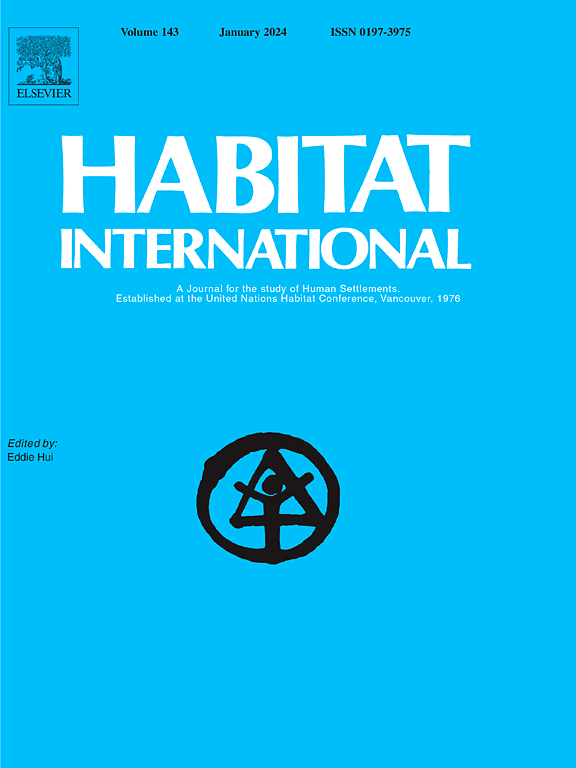Assessing the impact of modern streetcar on street robbery at street segment level: a longitudinal comparison in Cincinnati, OH
IF 6.5
1区 经济学
Q1 DEVELOPMENT STUDIES
引用次数: 0
Abstract
Many studies have examined the relationship between street crime and public transit nodes, such as bus stops, subway stations, railway stations, and shared bike stations, but few have touched on streetcar stations, especially at the street segment level. Like other types of transit nodes, streetcar stations may function as crime generators, as suggested by crime opportunity theories. This study examines the potential impact of streetcar stations on street robberies in Cincinnati, OH. Unlike most studies that either explore the association between transit and crime or compare the associations before and after transit operation, this study compares longitudinal associations of three periods of pre-construction, construction, and post-construction of the streetcar stations. We use GIS techniques, negative binomial regression, and difference-in-differences (DID) models for the comparison. Results reveal that street robbery decreased from pre-construction to post-construction of the streetcar in Cincinnati but became increasingly concentrated on a few street segments. No association exists between the location of future streetcar stations and street robbery prior to construction; however, the association emerges during construction and becomes more significant post-construction, coupled with community conditions and Point-of-Interests (POIs). Therefore, what generated crime is streetcar stations instead of the locations of the streetcar stations. Further, the effects of streetcar stations are not as strong as those of the bus stops. These findings contribute to the literature on street crime and public transit. The DID model further underscores the possible causal effect of the streetcar stations on crime. Moreover, it also informs the local police department that additional focus is needed for streetcar stations, bus stops and their surrounding social and built environments.
评估现代有轨电车在街道分段水平上对街道抢劫的影响:俄亥俄州辛辛那提市的纵向比较
许多研究调查了街头犯罪与公共交通节点(如公交车站、地铁站、火车站和共享自行车站)之间的关系,但很少涉及有轨电车站,特别是在街道段水平上。正如犯罪机会理论所建议的那样,像其他类型的交通节点一样,有轨电车站可能会产生犯罪。本研究考察了俄亥俄州辛辛那提市有轨电车站对街头抢劫的潜在影响。与大多数研究要么探索交通与犯罪之间的联系,要么比较交通运营前后的联系不同,本研究比较了有轨电车站建设前、建设中和建设后三个时期的纵向联系。我们使用GIS技术、负二项回归和差中差(DID)模型进行比较。结果表明,辛辛那提市有轨电车建设前后的街头抢劫有所减少,但越来越多地集中在少数街道段。未来有轨电车站的位置与施工前的街头抢劫之间不存在关联;然而,这种联系在建设过程中出现,并在建设后变得更加重要,再加上社区条件和利益点(poi)。因此,产生犯罪的是有轨电车站点,而不是有轨电车站点的位置。此外,有轨电车站的影响不如公共汽车站那么强。这些发现有助于研究街头犯罪和公共交通。DID模型进一步强调了有轨电车站对犯罪可能产生的因果影响。此外,它还通知当地警察部门,需要对有轨电车站、公共汽车站及其周围的社会和建筑环境给予额外的关注。
本文章由计算机程序翻译,如有差异,请以英文原文为准。
求助全文
约1分钟内获得全文
求助全文
来源期刊

Habitat International
Multiple-
CiteScore
10.50
自引率
10.30%
发文量
151
审稿时长
38 days
期刊介绍:
Habitat International is dedicated to the study of urban and rural human settlements: their planning, design, production and management. Its main focus is on urbanisation in its broadest sense in the developing world. However, increasingly the interrelationships and linkages between cities and towns in the developing and developed worlds are becoming apparent and solutions to the problems that result are urgently required. The economic, social, technological and political systems of the world are intertwined and changes in one region almost always affect other regions.
 求助内容:
求助内容: 应助结果提醒方式:
应助结果提醒方式:


